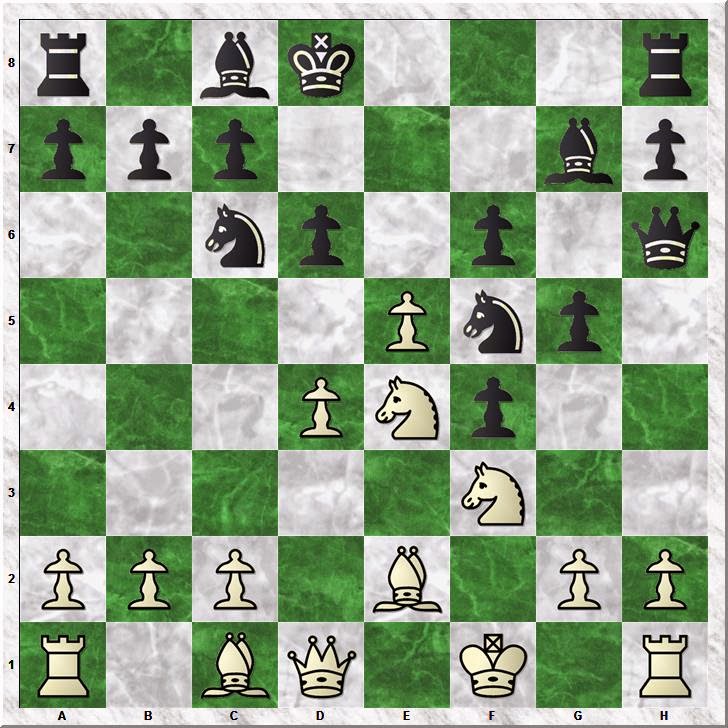In game 21 of their first match, Alexander McDonnell's knights prevailed (see "McDonnell's Cavalry"). In the next game,Louis-Charles Mahé de La Bourdonnais gave a demonstration of principles set down eighty-five years earlier in L’analyze des échecs (1849) by François-André Danican Philidor. His pawns decided the battle.
Occasionally, chess writers assert that Philidor's ideas concerning pawns were poorly understood until revived by Wilhelm Steinitz. For example, Dražen Marović offers this historical note in Understanding Pawn Play in Chess (2000).
Not many players followed in Philidor's footsteps. One must advance well into the next century to see another great player, Howard Staunton, exploring such niceties as the restrained engagement of pawns, play against doubled pawns or blockade. (5)Similarly, in My Great Predecessors (2003) Garry Kasparov suggests that Philidor "was too far ahead of his time: no one was able to play successfully in the manner proposed by him" (13). He observes that La Bourdonnais had studied Philidor's text, but did not adopt his principles.
Although he had studied Philidor's L'Analyse, he nevertheless played in a different, intuitive attacking style, in keeping with his own temperament. (14)Although we do not see the defensive technique against pawns that Marović asserts would emerge a decade later with Staunton, La Bourdonnais does offer several games that demonstrate the offensive power of pawns. Did he use his intuition, as Kasparov seems to suggest, to see through to the end in the present game? Or, did he calculate?
La Bourdonnais had already won the first match decisively before this game was played. Nonetheless, the players continued until twenty-one decisive games had been played.
Excluding draws, La Bourdonnais leads 13-4. The French player's win in game 22 makes it the eighteenth decisive game.
Beginning with the post, "Three Fighting Draws," I have been going through all of the games in this match. I offer my analysis without reference to engine evaluations.
McDonnell,Alexander -- De Labourdonnais,Louis Charles Mahe [C33]
London m1 London (22), 1834
1.e4 e5 2.f4 exf4 3.Bc4 Qh4+ 4.Kf1 g5 5.Nc3 Bg7 6.d4 d6
White to move
7.Nd5
7.Nf3 White could drive the queen back with 7...Qh5 8.h4 h6 9.Kg1 Qg6.
7...Kd8 8.Be2 Nc6 9.e5
Both kings are in the center
9...Nge7 10.Nc3
This retreat gives up valuable time
10.Nxe7 Nxe7 11.Nf3 Qh5 12.h4.
10...Nf5
I think that Black has a clear advantage. White lacks compensation for the sacrificed pawn.
11.Nf3 Qh6 12.Ne4 f6
White to move
13.exf6
13.e6 is interesting 13...Nce7 14.d5 c6.
13...Bxf6 14.g4
Is this move a simple error that loses two more pawns, or is it a clever sacrifice that releases White's pieces from their immobility?
14.Nxf6 Ng3+ (14...Qxf6 is simpler 15.c3) 15.Kg1 Nxe2+ 16.Qxe2 Qxf6 and White has little to show for the sacrificed pawn.
14...Nfxd4 15.Kg2
15.Nxd4? Qh3+ 16.Kf2 Bxd4+ with a strong attack for Black.
15...Bxg4 16.h4
16.Nxd4? Qh3+ 17.Kf2 Bxd4+ and Black's attack must be decisive.
16...Bxf3+ 17.Bxf3 Nxf3 18.Qxf3 Ne5 19.Qb3
Black to move
Threatening the b7 pawn and also Qe6.
19...Qg6
19...b6 20.Qe6 Rf8 21.hxg5 and White gets a good game.
20.Qxb7 Rc8 21.Bd2
White is prepared to bring his queenside rook into play, but the vulnerability of his king is significant.
21.h5 was worth considering 21...Qf5 22.Nxf6 Qxf6 23.Bd2.
21...gxh4+! 22.Kf1 Rg8
White to move
23.Nxd6!
Defending the crucial g2 square and also opening the Black king to attack. McDonnell is able to generate counterplay. However, as Black's king eventually finds security, White's decisive weaknesses on the kingside prove fatal.
23...cxd6 24.Ba5+ Ke8 25.Qxc8+
White has recovered all of the sacrificed material.
25...Kf7 26.Qb7+ Be7 27.Qd5+ Kf8
White to move
28.Rd1
28.Qa8+ does not solve White's problems. 28...Kg7 29.Qd5 f3 30.Rh2 Kh8.
28...f3 29.Rd2
29.Ke1 Qg2
29...h3 30.Qa8+ Kg7 31.Qxa7
Black to move
31...Qg2+!!
La Bourdonnais had to be certain that his king would find security from the checks. The queen sacrifice is temporary, and in fact nets a rook. But the bishop is sacrificed by this move, leaving Black's king exposed.
32.Rxg2+ fxg2+ 33.Kg1 Nf3+!
33...Kf7 34.Qf2+ Bf6 35.Rh2 Ng4 36.Qf4 and White appears to hold.
34.Kf2 gxh1Q 35.Qxe7+ Kh6
White to move
36.Qxd6+
36.Bd2+ fails 36...Ng5
36...Nxd2? seems to offer White a draw. 37.Qh4+ Kg7 38.Qg5+ Kf8 39.Qf6+ Ke8 40.Qe6+
37.Qf6+ Kh5 and White has run out of checks.
36...Kh5 37.Qd5+ Rg5 38.Qf7+ Kg4 39.Qc4+
Black to move
39...Nd4! 40.Qxd4+ Kh5 41.Bb6 Qh2+ 42.Ke1 Re5+ 43.Kd1 Qe2+ 44.Kc1
Black to move
44...Qe1+ 45.Qd1+ Qxd1+ 46.Kxd1 h2 0–1
Although La Bourdonnais reached a clear advantage from the opening, McDonnell found play for his pieces and gave us an exciting game. La Bourdonnais's belief in the power of his pawns guided his intuition. Or, perhaps, he demonstrated tremendous powers of calculation when the White queen started her assault.
McDonnell will reveal weaknesses in La Bourdonnais's pawns in the next game (see "Pawn Structure Chess").























The only plan that appears to work is the well known (in Anderson's day it was) 8.g3 fxg, 9.Kg2 Qh6.
ReplyDeleteFor these players it was all new, but White's king is precarious and there may be only one way to play it. 7.Nf3 Qh5, 8.h4 Bg4 and Black should be winning after trading down on f3 (Ng5 will drop a piece as after BxQd1, Bxf7+, QxBf7, NxQ KxN Black is up a piece).
For White to miss the strong g3 plan, it's easy to see how hopeless and flailing about that White must play. MacDonnell did a good job of making it look closer than it really was, IMO.
Carl Mayet invented the g3 maneuver as far as I know.
ReplyDelete